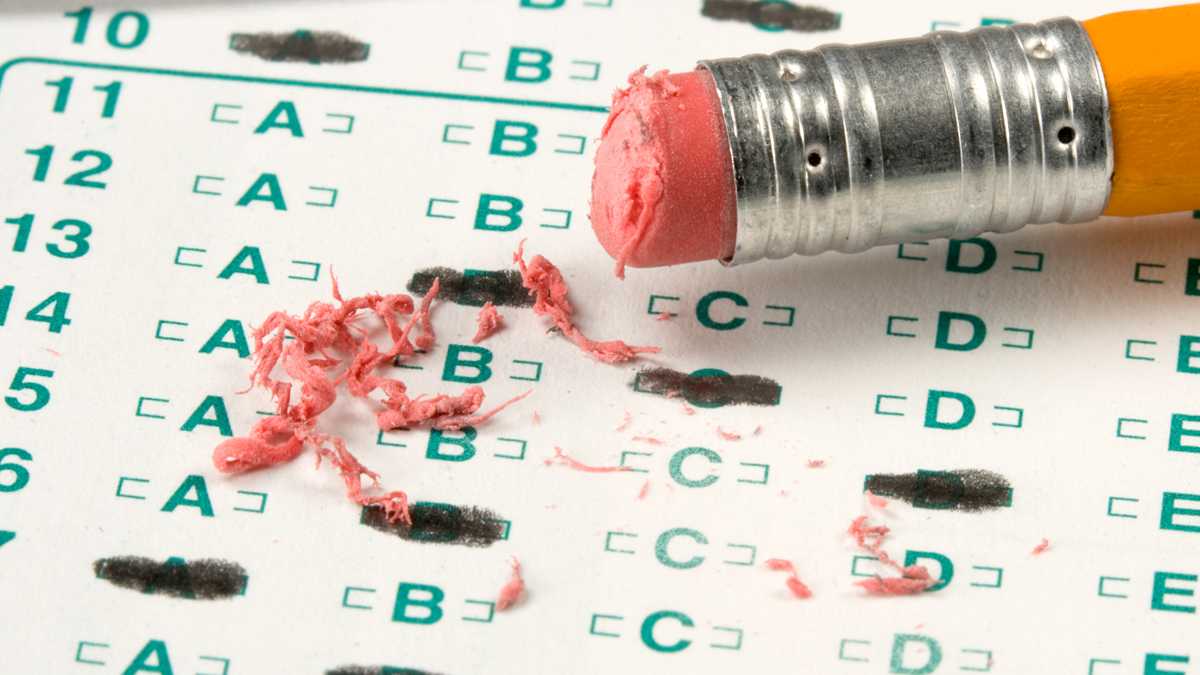Commentary: When unions attack standardized testing they should at least do their homework

Last month the Executive Committee of the Delran Education Association (Burlington County) issued a “massive position statement” detailing its “defiant opposition to the New Jersey Department of Education’s obsession with the use of high-stakes standardized testing.” Certainly, the leadership of DEA is not alone in its indignation at the state’s implementation of a new set of standardized tests called PARCC that are aligned with the Common Core State Standards. Indeed, there’s been demonstrable growth in opposition to public school accountability over the last year or so, and this movement attracts both liberals and conservatives.
But problems crop up when statements of opposition or support are interwoven with distortions. That doesn’t mean we dismiss the sentiment but a little weeding never hurt any garden.
So, let’s yank three of the more egregious weeds that undermine DEA’s position and then look for some common ground.
DEA argues that standardized tests like PARCC (but apparently not like N.J.’s ASK tests for grades 3-8 and HSPA graduation tests) “creative a dull, punitive, and submissive learning environment that stifles learning and creativity in both students and teachers” and “set[s] students up for failure.”
Actually, research indicates that testing in itself can help students retain information and, in fact, can foster creativity and learning. It all depends on the material being tested and it all depends on the test. In other words, testing is not evil unto itself. In New Jersey, and in most other states in the country, students will be tested on mastery of the Common Core, which is widely supported by teacher unions, educators, and school districts. Here’s CEA’s parent, NJEA, on the Common Core: “let me begin by being as unambiguous as I can: NJEA supports the Common Core State Standards. I want that to be very clear.”
Certainly, it’s fair to worry about the quality of the PARCC tests. But let’s remember that these tests are not high-stakes for students. They’re high-stakes for a small portion of teacher evaluations (10 percent this year; the rest of the evaluation will be based on traditional observational and portfolio assessments) and they’re high-stakes for districts. Students are not “set up for failure,” but districts that receive poor scores will know that they need to improve classroom content and instruction.
The PARCC tests “are not created by teachers, but corporate entities whose goal is not to improve student learning or instruction, but to promote the sale of additional a ‘support material’ to cash-strapped school districts who find themselves (by design) on the failing side of arbitrary cut scores.”
DEA creates the perception that there’s something different about PARCC’s creation compared to other standardized tests. While it’s true that the PARCC tests were created by Pearson, a for-profit British company that produces many of America’s textbooks, assessments, and professional development materials, states typically contract with private companies to develop assessments. For example, N.J.’s current high school proficiency test was produced by Measurement Inc., another for-profit “corporate entity” that inspired no DEA complaints.
“Such tests purport to determine college or career readiness as early as the 3rd grade. There is no statistically accurate means of doing so.”
The PARCC tests do not label 8-year-olds as college-ready. However, there is much research that verifies that third-grade reading levels are predictive of graduation and college attendance. See this University of Chicago study, for example. We help children and families to succeed by accurately gauging reading levels, and sometimes this is done through standardized tests.
“The erroneous claim that the American public school system was failing first came about in April of 1983 with the release of the report “A Nation At Risk: The Imperative for Educational Reform.”
Actually, the publication of “A Nation at Risk” is widely hailed as a pivotal moment by all those who value educational improvement. The Report famously articulated a “rising tide of mediocrity that threatens our very future as a Nation and a people” and was embraced by America’s most famous unionist, Albert Shanker. According to former AFT President Sandra Feldman, “when Al finished reading the report, he closed the book and looked up at all of us and said, ‘the report is right, and not only that, we should say that before our members.'” Fourteen years later, Democratic President Bill Clinton, as part of his 1997 State of the Union speech, echoed the Report’s conclusions when he said, “tonight, I issue a challenge to the nation. Every state should adopt high national standards, and by 1999, every state should test every 4th grader in reading and every 8th grader in math to make sure these standards are met.”
Certainly, reasonable people can disagree about the how quickly N.J. should implement PARCC, or whether the State offered enough aid, or whether every district has necessary bandwidth, or how much test data should infuse teacher evaluations. These are important conversations well worth having. But Delran’s screed veers less towards serious educational discussion and more towards Sarah Palin-esque hysteria. Remember when Palin said that the Pres. Obama’s Affordable Health Care Act was a “death panel” in disguise? How different is that comment in tone and hyperbole from DEA’s allegation that America’s decades-long quest for educational equity and excellence is “by design…intended to label both students and schools as failures”?
If we’re to find common ground among those who fear an over-emphasis on testing and those who champion higher expectations for students, then all of us need to eschew distortions and misrepresentations. An easy way to start is by sticking to the facts.
_________________________________________________
Laura Waters is vice president of the Lawrence Township School Board in Mercer County. She also writes about New Jersey’s public education on her blog NJ Left Behind. Follow her on Twitter @NJLeftbehind.
WHYY is your source for fact-based, in-depth journalism and information. As a nonprofit organization, we rely on financial support from readers like you. Please give today.





